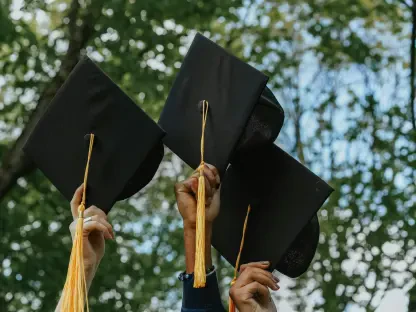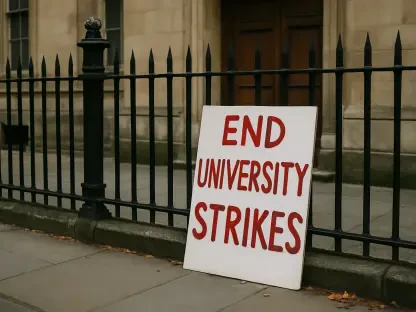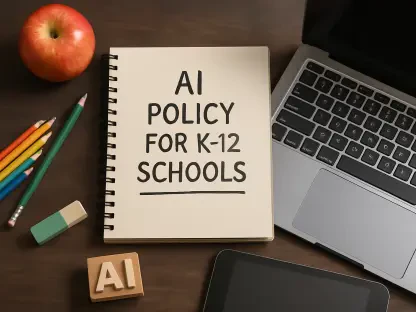The student loan debt crisis in the United States has grown into a monumental challenge, impacting millions of Americans who once viewed higher education as a guaranteed ticket to the middle class, only to find this dream overshadowed by a staggering financial burden that often lasts a lifetime. With borrowers collectively owing billions, and many seeing their loan balances increase rather than decrease due to interest, the scale of this issue is undeniable. What was initially designed as a mechanism to expand access to college has morphed into a national emergency, trapping generations in a cycle of debt. This crisis didn’t emerge suddenly; it’s the culmination of decades of policy missteps, economic shifts, and systemic oversights that prioritized short-term solutions over sustainable funding. The personal toll is profound, with stories of individuals struggling under the weight of loans for decades, unable to achieve milestones like homeownership or retirement. Beyond the numbers, the societal implications are vast, affecting economic mobility and deepening inequalities. This article aims to unpack the complex journey of student loans from a beacon of opportunity to a source of widespread distress, examining historical roots, economic trends, and political dynamics. By delving into the key forces at play, a clearer picture emerges of how this problem took hold and why addressing it remains an urgent priority.
Tracing the Origins of a Debt-Driven System
The foundation of the student loan crisis can be traced back to well-intentioned policies that sought to democratize higher education. In 1965, under President Lyndon B. Johnson, the federal student loan program was established as a cornerstone of the Higher Education Act, embodying a vision where college access wasn’t limited by financial status. This initiative framed education as a national imperative, a public good that deserved support to ensure opportunity for all. However, rather than funding this vision through robust grants or subsidies, policymakers leaned heavily on loans as the primary mechanism. This decision shifted the financial risk onto students, setting a precedent that would shape the future of higher education financing. While the program initially opened doors for many, it also planted the seeds of a system where debt became an expected part of pursuing a degree. Over time, this reliance on loans over direct public investment created a framework that prioritized access in theory but burdened individuals in practice, laying the groundwork for the challenges seen today.
As the decades progressed, the philosophical approach to education funding underwent a significant shift, particularly during the 1980s under President Ronald Reagan. This era marked a pivot toward individual responsibility, with the belief that students should bear the cost of their education rather than relying on taxpayer support. Public funding for higher education was slashed, and programs like Pell Grants, which once provided substantial relief, saw diminished support. As a result, more students turned to loans to bridge the gap, normalizing debt as an inevitable part of college. This policy shift wasn’t just a budgetary decision; it reflected a broader cultural change that moved away from viewing education as a collective investment. The consequences were far-reaching, as the burden of rising costs fell squarely on individuals, many of whom lacked the resources to manage such financial obligations. This period solidified a trajectory where borrowing became the default, a trend that would only intensify with time.
The Escalation of Costs and Institutional Failures
One of the most significant drivers of the student debt crisis has been the relentless rise in college tuition, far outpacing inflation and wage growth. Particularly after the Great Recession, state budgets faced severe constraints, leading to deep cuts in funding for public universities. To compensate, institutions raised tuition, passing the cost directly to students. With limited options, many had to borrow larger sums to afford an education that was increasingly seen as a prerequisite for economic stability. This trend wasn’t merely a response to economic downturns; it reflected a systemic shift where higher education moved from a public service to a market-driven commodity. The result was a vicious cycle: as costs soared, so did debt levels, leaving graduates with financial obligations that often overshadowed the benefits of their degrees. This dynamic has made college less a pathway to prosperity and more a gamble with high stakes, especially for those without familial wealth to fall back on.
Compounding the issue of rising costs has been the emergence of for-profit colleges, which have played a notorious role in exacerbating the debt crisis. These institutions often target vulnerable populations, including low-income and minority students, with aggressive marketing and promises of quick, career-boosting degrees. However, many of these programs deliver substandard education, leaving graduates with credentials of little value in the job market. Coupled with high tuition rates, students frequently end up with substantial loans they cannot repay, especially when promised job opportunities fail to materialize. Regulatory oversight of these schools has historically been lax, allowing predatory practices to flourish unchecked. This exploitation has not only deepened the financial struggles of individual borrowers but also eroded trust in the broader higher education system, highlighting a critical failure to protect students from commercial interests that prioritize profit over educational outcomes.
Unequal Burdens and Systemic Disparities
The student debt crisis is not experienced uniformly across society; it disproportionately affects certain groups, revealing deep-seated inequities. Black students, in particular, face significant challenges, often borrowing larger amounts to attend college due to systemic economic disparities such as the racial wealth gap. Repayment becomes a prolonged struggle, with many seeing little progress on their loan principals even after years of payments. This reality is rooted in historical policies, like the segregated implementation of the GI Bill, which limited wealth-building opportunities for Black families. As a result, student loans don’t just represent a personal financial hurdle; they reflect and perpetuate broader societal inequalities that hinder economic mobility. Addressing the crisis, therefore, requires acknowledging these disparities and crafting solutions that target the unique barriers faced by marginalized communities, rather than applying a one-size-fits-all approach.
Beyond racial disparities, other systemic factors amplify the burden of student debt for specific demographics. Single parents, for instance, often juggle education with caregiving responsibilities, making loan repayment an even greater challenge amidst limited income and time. Older adults, too, find themselves caught in the debt trap, sometimes carrying balances from loans taken out decades ago while nearing retirement with diminished earning capacity. These groups illustrate how the student loan system fails to account for diverse life circumstances, often penalizing those who are already economically vulnerable. The intersection of debt with other societal pressures creates a compounding effect, where financial strain spills over into every aspect of life, from mental health to family stability. Recognizing these varied impacts is essential to understanding the full scope of the crisis and ensuring that reform efforts address the needs of all affected populations.
The Personal Toll of a Broken System
Behind the staggering statistics of student debt lie countless personal stories that reveal the human cost of this crisis. Borrowers describe lives put on hold, with loan payments consuming a significant portion of income, often for decades. Many speak of delaying major life decisions—buying a home, starting a family, or saving for retirement—due to the relentless pressure of debt. The emotional weight is just as heavy, with stress and anxiety becoming constant companions for those who feel trapped in a financial cycle with no end in sight. These narratives challenge the simplistic view that student debt results from poor personal choices, instead pointing to a system that offers limited alternatives and punishes those who pursue education as a means of advancement. The individual experiences of struggle and sacrifice underscore the urgent need for structural changes that prioritize borrower well-being over perpetuating an unsustainable model.
The ripple effects of student debt extend far beyond personal finances, reshaping societal norms and expectations. For many, the promise of higher education as a gateway to opportunity feels like a broken contract, replaced by a reality of financial servitude. Graduates often find themselves in low-paying jobs unrelated to their degrees, unable to justify the years of borrowing with tangible economic gains. This disconnect fuels disillusionment, not only with the education system but also with broader institutions that fail to deliver on the American Dream. Families, too, bear the burden, as parents co-sign loans or deplete savings to support children through college, sometimes at the expense of their own financial security. These cascading impacts highlight how the crisis transcends individual borrowers, affecting entire communities and altering perceptions of education’s value in modern society.
Commercial Exploitation and Policy Shortcomings
A critical factor in the student debt crisis has been the role of commercial interests, which have often prioritized profit over the welfare of students. Financial institutions have reaped substantial gains from the loan system, benefiting from high interest rates and federal guarantees that minimize their risk. Meanwhile, borrowers face the consequences of these arrangements, often locked into repayment plans that accrue interest faster than they can pay down the principal. This imbalance reveals a fundamental flaw in a system that was meant to serve the public but has instead become a lucrative business for lenders. The commercialization of student loans has shifted the focus away from education as a societal benefit, turning it into a transaction where students are treated more as customers than as citizens deserving of support.
Equally troubling has been the lack of accountability for educational institutions, particularly for-profit colleges, which have exploited regulatory gaps to the detriment of students. These schools frequently enroll individuals with little regard for their ability to succeed academically or financially, pushing them into high-cost programs with dubious outcomes. The absence of stringent oversight has allowed predatory practices to thrive, such as misleading claims about job placement rates or the transferability of credits. As a result, many students graduate—or drop out—with significant debt but without the skills or credentials needed to secure stable employment. This failure of policy to protect vulnerable populations from exploitation has deepened the crisis, emphasizing the need for stronger regulations and a reevaluation of how educational quality is monitored and enforced.
Navigating Political Challenges and Reform Efforts
In recent years, the student debt crisis has gained prominence in political discourse, driven by growing public frustration and grassroots activism. Movements advocating for sweeping changes, such as complete debt cancellation or free public college, have gained traction, influencing policymakers to propose bold reforms. Figures like Elizabeth Warren and Joe Biden have pushed for significant relief measures, including forgiveness plans that could wipe out substantial portions of debt for millions of borrowers. However, these initiatives have met with fierce resistance, exemplified by the Supreme Court’s rejection of Biden’s 2022 forgiveness proposal, which aimed to provide up to $20,000 per borrower. This legal setback, alongside partisan disagreements over the role of government in education funding, illustrates the steep challenges facing reform. Despite the momentum for change, the path to meaningful solutions remains fraught with obstacles.
The political landscape surrounding student debt is further complicated by competing visions for the future of higher education. Conservative factions often advocate for measures like limiting loans for programs with low earning potential, arguing that this promotes accountability and protects taxpayers. Yet, such approaches risk excluding marginalized students from educational opportunities without offering viable alternatives like expanded grants or subsidies. On the other hand, progressive proposals for free college and income-driven repayment plans aim to reduce the burden on individuals, though they face criticism over feasibility and cost. This ideological divide has stalled progress, leaving many borrowers in limbo as debates continue without resolution. The lack of consensus underscores the complexity of addressing a crisis intertwined with economic, social, and political dimensions, requiring a balanced approach that bridges differing perspectives.
Envisioning a Sustainable Future for Higher Education
As the student debt crisis persists, a fundamental question looms: can loans ever serve as a fair and effective tool for funding education? Proponents argue that borrowing enables access to college, often leading to higher graduation rates and long-term earning potential that justify the cost. Data supports this to some extent, showing that degree holders generally outearn those without. However, this aggregate benefit masks the harsh reality for countless individuals who face defaults, lifelong debt, and financial distress that outweighs any gains. The stark contrast between systemic advantages and personal struggles fuels ongoing debate, with no easy answers in sight. Resolving this tension demands a critical reassessment of how education is financed, ensuring that the pursuit of knowledge doesn’t come at the expense of economic stability for millions.
Looking ahead, actionable steps and innovative policies offer hope for mitigating the crisis and preventing its recurrence. Investing in free public college could eliminate the need for borrowing at the outset, reframing education as a public good rather than a personal expense. Enhancing support systems, such as graduation coaching and financial literacy programs, could help students navigate their academic and financial journeys more effectively. Additionally, targeted debt forgiveness for vulnerable groups, coupled with reforms to income-driven repayment plans, might provide immediate relief while addressing long-term inequities. Strengthening oversight of for-profit institutions and curbing predatory lending practices are also crucial to protect future borrowers. These measures, though ambitious, reflect a growing recognition that the current system is unsustainable, urging a collective commitment to transform higher education into an equitable and accessible pathway for all.









